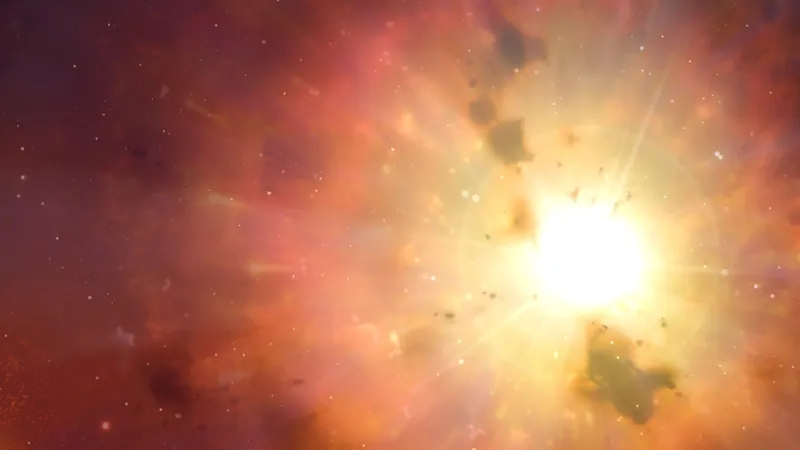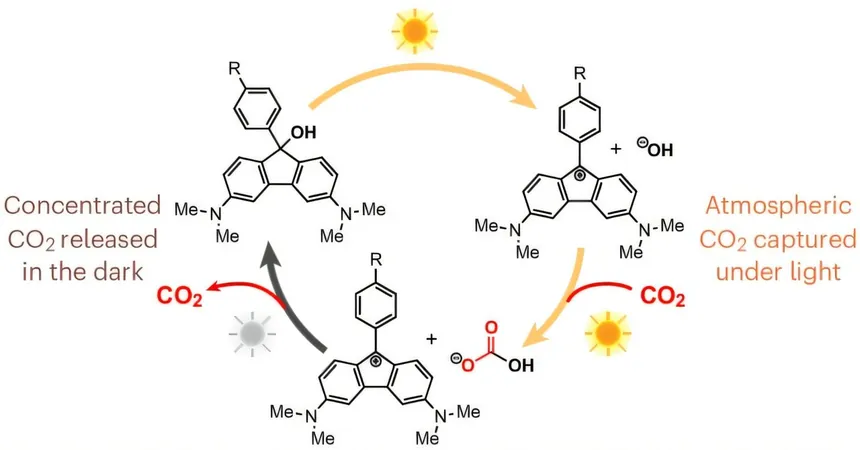
Astronomers Make Groundbreaking Discovery: Detecting Supernovas Just Hours After Their Explosions!
2025-08-19
Author: Michael
Supernovae, the spectacular explosions marking the end of a star's life, have long fascinated astronomers. Yet, capturing these cosmic events in real-time has been a monumental challenge—until now! Recently, scientists have unveiled a revolutionary method to identify young supernovae mere hours after they occur.
While we understand which stars will explode as supernovae, predicting the timing of these cosmic fireworks remains a mystery. Previously, spotting a supernova right after its detonation hinged entirely on chance. However, large-scale sky surveys that scan the night sky every few days have started to shift the odds in our favor.
The real hurdle, though, is sifting through massive datasets to pinpoint a young supernova. Lluís Galbany, a researcher at the Institute of Space Sciences in Barcelona, emphasized the importance of quick detection: "The sooner we see them, the better," he stated.
Supernovae primarily arise from two types of stars. First, white dwarfs, remnants of sun-like stars, explode when their mass exceeds 1.44 times that of our Sun, often by stealing material from a companion star. Second, massive giant stars, at least eight times the Sun's mass, detonate when they exhaust their nuclear fuel, resulting in a dramatic core collapse.
Galbany’s team leveraged the 10.4-meter Gran Telescopio de Canarias, the world's largest optical telescope, to track ten early-stage supernovae. Impressively, they detected most of these cosmic blasts within six days, with a couple occurring just 48 hours prior!
The team's successful detection followed a strict two-step protocol. First, they ensured the candidate supernova was absent from previous night's images, confirming they were indeed witnessing the early explosion. Second, they identified the object within a galaxy, avoiding any confusion with local flare stars or quasars. This meticulous approach triggered the OSIRIS instrument on the telescope for spectra measurements.
Galbany shared, "A supernova's spectrum reveals critical details, such as whether the star had hydrogen, indicating a core-collapse event. Understanding these initial moments opens doors to additional data about the explosion.”
Early signals of a supernova, known as 'shock breakout,' provide vital insights into the star's structure and explosion mechanics. The subsequent blast wave generates a transient 'flash spectrum' that contains information about gases ejected during the star's death throes. This data helps astronomers understand not only the exploding star but also its surrounding environment, shedding light on the cosmic neighborhoods where supernovae are born.
Looking ahead, the Vera C. Rubin Observatory, set to launch before the end of 2025, is expected to revolutionize early supernova detection. With an impressive ten million alerts issued nightly—including everything from variable stars to supernovae—researchers will have access to an unprecedented amount of cosmic data.
Galbany believes that routine detection of supernovae just hours old might soon become a reality, significantly enhancing our understanding of these celestial explosions. "With efficient spectroscopic programs coordinated with deep photometric surveys, we can realistically expect to collect spectra within a day of explosion, paving the way for systematic studies of these enigmatic events," he concluded.









 Brasil (PT)
Brasil (PT)
 Canada (EN)
Canada (EN)
 Chile (ES)
Chile (ES)
 Česko (CS)
Česko (CS)
 대한민국 (KO)
대한민국 (KO)
 España (ES)
España (ES)
 France (FR)
France (FR)
 Hong Kong (EN)
Hong Kong (EN)
 Italia (IT)
Italia (IT)
 日本 (JA)
日本 (JA)
 Magyarország (HU)
Magyarország (HU)
 Norge (NO)
Norge (NO)
 Polska (PL)
Polska (PL)
 Schweiz (DE)
Schweiz (DE)
 Singapore (EN)
Singapore (EN)
 Sverige (SV)
Sverige (SV)
 Suomi (FI)
Suomi (FI)
 Türkiye (TR)
Türkiye (TR)
 الإمارات العربية المتحدة (AR)
الإمارات العربية المتحدة (AR)